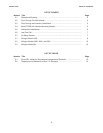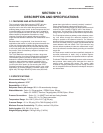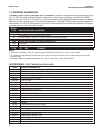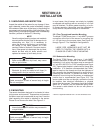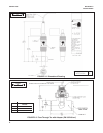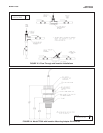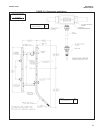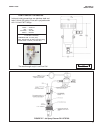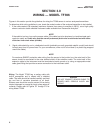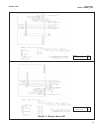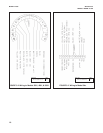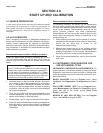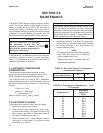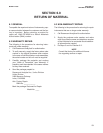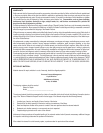
8
Wiring. The Model TF396 has a mating cable with
built-in preamplifier and is offered with a shielded
cable. The cable should be handled carefully and kept
dry and free of corrosive chemicals at all times.
Extreme care should be used to prevent it from being
twisted, damaged or scraped by rough, sharp edges or
surfaces. Please refer to Figures 3-1 through 3-3 for
wiring Model TF396.
DANGER
DO NOT CONNECT SENSOR CABLE TO
POWER LINES. SERIOUS INJURY MAY
RESULT.
Figures in this section provide the guidelines for wiring the TF396 sensor to various analyzers/transmitters.
To determine which wiring guideline to use, locate the model number of the analyzer/transmitter to be installed.
1. If the cable needs to be extended (maximum distance from sensor to analyzer is 250 ft), use a high quality
eleven conductor double shielded instrument cable available from Rosemount Analytical.
NOTE
If the cable is too long, loop up the excess cable. If the cable has to be shortened, cut and terminate each
conductor neatly and make sure that the overall (outermost) drain wire is not shorted out with either
of the two inner drain wires (shields).
2. Signal cable should be run in a dedicated conduit (preferably an earth grounded metallic conduit) and should
be kept away from AC power lines. For your convenience, a wire nut kit is furnished (in a plastic bag wrapped
around the cable).
NOTE
For maximum EMI/RFI protection when wiring from the sensor to the junction box, the outer braid of the
sensor should be connected to the outer braided shield of the extension cable. The outer braid of the
extension cable to the instrument must be terminated at earth ground or by using an appropriate metal
cable gland fitting that provides a secure connection to the instrument cable.
MODEL TF396 SECTION 3.0
WIRING - MODEL TF396
SECTION 3.0
WIRING — MODEL TF396



